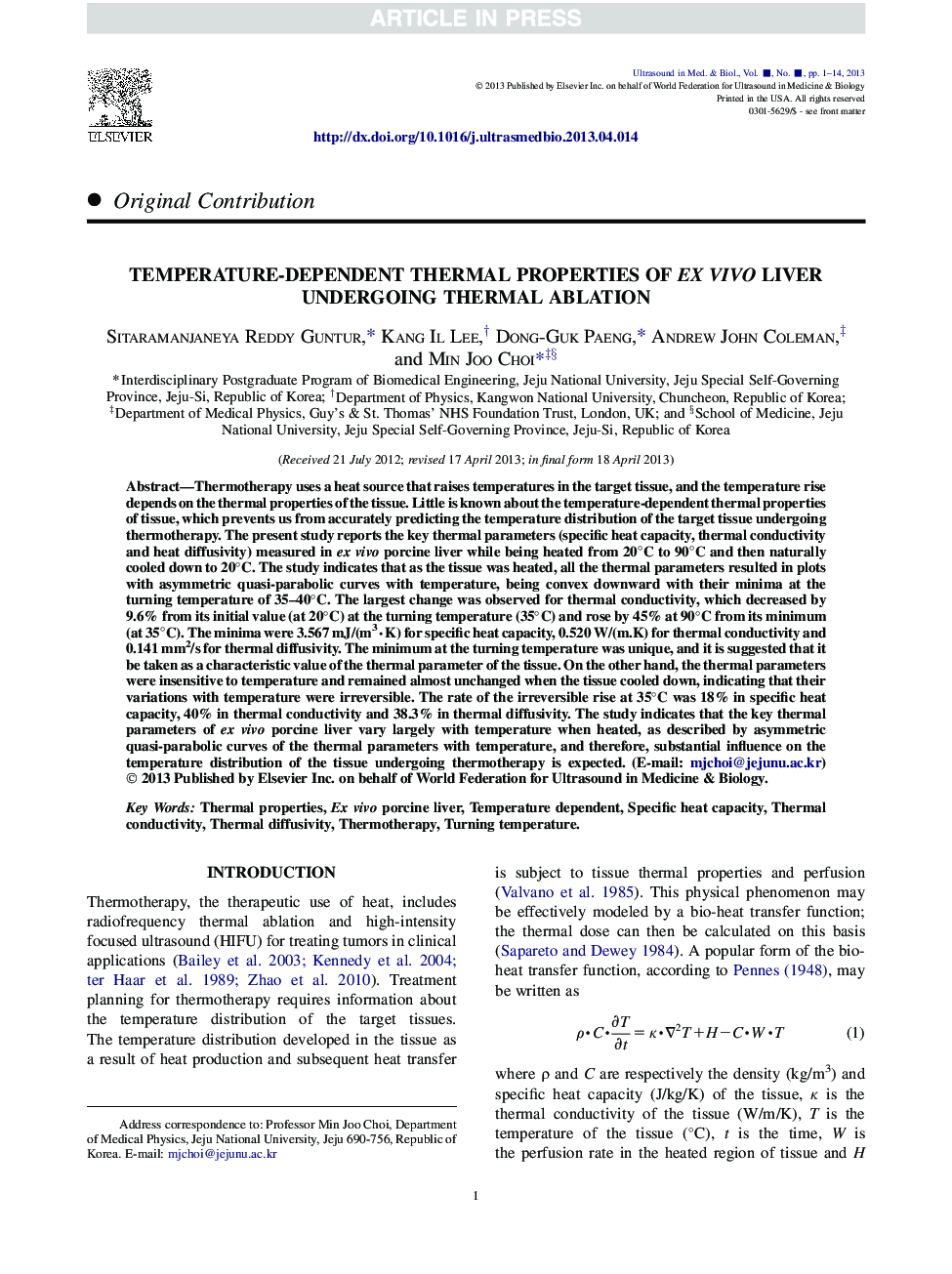| Article ID | Journal | Published Year | Pages | File Type |
|---|---|---|---|---|
| 1760801 | Ultrasound in Medicine & Biology | 2013 | 14 Pages |
Abstract
Thermotherapy uses a heat source that raises temperatures in the target tissue, and the temperature rise depends on the thermal properties of the tissue. Little is known about the temperature-dependent thermal properties of tissue, which prevents us from accurately predicting the temperature distribution of the target tissue undergoing thermotherapy. The present study reports the key thermal parameters (specific heat capacity, thermal conductivity and heat diffusivity) measured in ex vivo porcine liver while being heated from 20°C to 90°C and then naturally cooled down to 20°C. The study indicates that as the tissue was heated, all the thermal parameters resulted in plots with asymmetric quasi-parabolic curves with temperature, being convex downward with their minima at the turning temperature of 35-40°C. The largest change was observed for thermal conductivity, which decreased by 9.6% from its initial value (at 20°C) at the turning temperature (35°C) and rose by 45% at 90°C from its minimum (at 35°C). The minima were 3.567 mJ/(m3âK) for specific heat capacity, 0.520 W/(m.K) for thermal conductivity and 0.141 mm2/s for thermal diffusivity. The minimum at the turning temperature was unique, and it is suggested that it be taken as a characteristic value of the thermal parameter of the tissue. On the other hand, the thermal parameters were insensitive to temperature and remained almost unchanged when the tissue cooled down, indicating that their variations with temperature were irreversible. The rate of the irreversible rise at 35°C was 18% in specific heat capacity, 40% in thermal conductivity and 38.3% in thermal diffusivity. The study indicates that the key thermal parameters of ex vivo porcine liver vary largely with temperature when heated, as described by asymmetric quasi-parabolic curves of the thermal parameters with temperature, and therefore, substantial influence on the temperature distribution of the tissue undergoing thermotherapy is expected.
Keywords
Related Topics
Physical Sciences and Engineering
Physics and Astronomy
Acoustics and Ultrasonics
Authors
Sitaramanjaneya Reddy Guntur, Kang Il Lee, Dong-Guk Paeng, Andrew John Coleman, Min Joo Choi,
